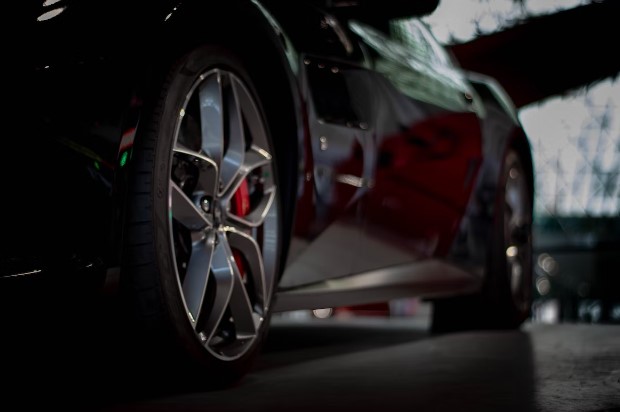Deep down inside, everyone with a passion for driving wants to hit the racing tracks. But how many thrill seekers are actually aware of the basics?
Maintenance of your car beforehand is almost as important, if not more, as your skills on the road. This is especially true if you frequently take your vehicle to the tracks. Remember that racing cars require different maintenance procedures than standard vehicles.
It is recommended to follow a weekly routine procedure to sustain your car to avoid accidents on the track. The following ten tips are just the guidance you need to kick-start your own racing car care routine.
Keep Your Vehicle Spotless: Inside and Out
The best way to keep your vehicle spotless and looking brand new involves getting it detailed from time to time. And irrespective of whether you are looking for auto detailing in Canton, Seattle, or anywhere else, you will find a plethora of affordable options all over. But this can be expensive, so you also need to have a maintenance plan to make sure your car is in top-notch condition.
The first step towards developing the ideal maintenance plan is ensuring that your vehicle is thoroughly clean inside and outside.
Check the frame of your car to ensure no damage. It is important because the outer layer shields the driver and other components. The grime accumulates inside nozzles and has to be removed. The torque tube must be regularly cleaned and re-greased when holding the back in place during acceleration and braking.
A weekly inspection is advised for people with a weekly racing schedule. Timely preventative measures and visits to the mechanic can help you avoid accidents on the tracks.
Monitor the State of Your Wheels and Tires
The tires and wheels are perhaps a car’s most crucial parts when on the road. People often face difficulty in differentiating between the two. While the words are sometimes interchangeable, they are not quite the same. In fact, the tire is made of rubber and is secured to the metal rim of the wheel.
You can find gear for your vehicle at clubracersgarage.com, where they also offer a wide range of affordable racing gear and accessories. Regularly checking the state of your tires is crucial to avoid accidents while racing. Look out for punctures, tears, uneven wear, or any other signs that may indicate the need for replacement.
Wheels
Wheels need to be inspected for cracks and bends regularly. The individual behind the wheel could sustain serious injuries due to multiple components being compromised by a damaged wheel.
Tires
Check for punctures or any debris stuck within the tires’ treads. Spare tires need to be stored deep within your garage in cool, dark places away from sunlight and other heat sources.
Manage Your Car’s Oil Intake and Fuel Lines
Oil consumption of a car depends on several factors, such as the engine’s mechanism, the owner’s driving style, and external environmental conditions.
Oil Intake
Lubrication of the engine in a racing car is crucial. Frequently changing the car’s fuel ensures no impurities, such as soot deposits and small component wear particles. Contamination of the oil with such materials will cause the engine lubrication to degrade and hamper its performance on the road.
Fuel Lines
Fuel lines that transfer motor oil within the vehicle need to be monitored for any leakages. Use a flashlight to move along the line of the pipe, and if you notice areas with a buildup of dust and road grime, as well as areas with damp stains, chances are you have discovered a leak.
Check the Car’s Engine Frequently
A car’s engine needs timely fuel replacement for smooth running. The oil lubricates and protects the engine’s moving components, keeping it cool and clean. The oil gauge on your dashboard will indicate the amount of oil in your vehicle. The engine could seize and stop working if there isn’t enough of it.
If the car’s engine light blinks, it means the battery is faulty. A defective or undercharged battery won’t supply the proper amount of power to the car’s processor. A multimeter voltage reader can help detect abnormalities in automotive batteries. It will show a reading of 12.6 volts or above when the battery is fully charged and between 13.7 and 14.7 volts while the engine is running.
Keep Your Ear Out for Knocking Noise and Increased Exhaust
Knocking Noise
Engine bearings help the moving engine parts to operate. You can use high-precision mechanical engineering components, like TIMKEN bearings, that will outperform the competitors for impressive reliability and durability. If you hear a banging noise from under the hood, it is a faulty engine bearing that changes speed with engine RPMs. An engine bearing may seize when a car travels at such high speed, causing the engine to sustain severe damage.
Increased Exhaust
It is essential to notice the exhaust emitting from the tapline of your vehicle. Different hues of smoke indicate multiple issues. Burning oil is indicated through blue smoke, while black smoke is a sign of overusing fuel.
Schedule a maintenance appointment with your trusted mechanic before heading down to the racetrack, should these problems arise.
Inspect The Other Essential Fluids
Although engine oil is arguably the most vital fluid for a car, there are several others that you should routinely check.
Coolant
Combustion and friction increase inside the engine during the chase of a race. Coolant or antifreeze absorbs heat and transfers it to the radiator for dissipation. Inspecting the correct coolant level after every 50,000 miles should suffice.
Brake Fluid
Brakes are the most important components in a classic or a racing car. Brake fluid directly connects the pedals to the brakes by operating a hydraulic system. If there is any trouble with the pedals, the first thing to do is to check the fluid, which can be contaminated by water.
Clean Up the Shock Absorbers Regularly
Shock Absorbers in a racing car should be cleaned as often as possible. Remove them slowly from the car for a thorough inspection. Dirt and grit often cause damage to the shaft and divider of the absorbers, so maintaining routine cleanups will help sustain the seals.
Every vehicle’s shocks have bump stoppers that easily move up and down. Without spraying directly at the seals, use traffic film remover, liquid soap, or water to wet the shock absorber’s body, and gently rub it dry with a clean cloth.
Inspect carefully for cracks or dents on the body for any impairment. A faulty shock will not run smoothly and create difficulties for the driver. This is due to the different responses from the opposite shocks.
Your car needs to have a shock absorber that best fits its mechanism. Ranging from Bilstein Shock Absorbers to Monroe Shock Absorbers, the options are limitless.
Maintain and Protect the Chassis of Your Car
The chassis in a car is the equivalent of a human skeleton. Naturally, its responsibility is to secure the car’s frame from underneath. For increased safety and longevity, give the undercarriage a thorough inspection at least once a month.
The driveline parts and chassis of your car are always moving. The components in a chassis require a variety of lubricants. Without constant re-greasing, the vehicle’s inner systems, such as the front wheel drive or the driveshaft, will run dry and precipitately fail.
It is suggested that your car’s chassis should be lubricated at least once every six months. Primitive care and precautions will prevent the collapse of expensive parts and keep you from getting stuck on the racecourse.
Examine the Suspension
Your car’s suspension system plays a pivotal role in the safety of your vehicle and you. It helps you with smoother handling to ensure safe driving while aiding automotive systems and components like brakes, wheels, tires, axles, differentials, and more.
Wheel Alignment
Wheel alignment ensures stable steering, control, and handling of your vehicle, subsequently preventing breakage in the tire and its surrounding parts. If you notice the car moving to one side, shaking of the steering wheel, or excessive tire damage, it is due to the wheel alignment.
Tire Pressure
The suspension shocks, springs, and other components take massive hits if the air pressure in the tires is not optimum. Check through all four tires and maintain the recommended tire pressure across all. This will benefit your racing car’s overall suspension system.
Maintain Optimum Braking System
Race cars mostly use ceramic or carbon brakes to withstand the ultrahigh temperatures generated from constant breaking on the racetracks.
It is recommended to have the brake and brake pads checked once or twice a year. Although some brake pads can last up to 100,000 miles, they typically last between 30,000 and 70,000 miles. A high squealing or clicking noise indicates that it is time to change your braking pad.
Frequently check your braking fluid to avoid contamination and smooth administration of the pedals. Notice any signs such as unprovoked noise, delay in halting the vehicle, brake pedal shaking when pressed, etc. This, along with other indicators will point to a faulty braking system.
While on the track, slow down your car before pushing the brake and avoid harsh braking altogether.
Final Thoughts
Driving a racing car is exciting and releases adrenaline. The driver should only focus on the road and the thrill of the ride once the vehicle is in motion. To ensure a smooth drive, have your maintenance routine in check before the race.
Inspect your suspension and braking systems as recommended. Check each component individually, starting from the chassis, the car’s frame, the shock absorbers, and the engine. Maintaining the fluids running through your vehicle and greasing the motors is crucial for avoiding any sudden seizure.
Maintenance focuses more on preserving your car’s condition with primitive techniques than repairing it later. You will be prepared to fasten your seatbelt, shift into gear, and drift to the finish line since everything will already be set.







